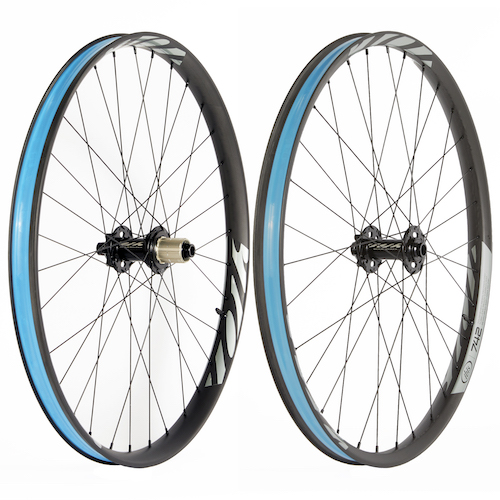
Ibis 742 Carbon Logo Wheels
Built with:
- Ibis hubs
- Sapim D-Light Spokes (32, 3 cross)
Internal Rim Width: 35 mm
External Rim Width: 42 mm
Blister’s Measured Weight:
- Front: 765 g
- Rear: 908 g
- Total: 1673 g
MSRP: $1,299
Reviewer: 5’9”, 155 lbs.
Test Duration: 5 Months
Test Locations: Montana, British Columbia
Intro
While it seems like everyone and their mother is making carbon rims these days, Ibis was ahead of the curve. Not only that, but they apparently sensed that wide rims were going to be a popular choice, because even their earliest wheelsets were offered with some pretty wide hoops.
Fast forward a few years, and Ibis is still in the game. Their wheels have undergone some revisions and refinements, and they’re now offering 10 different wheelsets both in carbon and aluminum options at a variety of price points.
We’ve spent the last 5 months testing Ibis’ 742 Carbon Logo wheels on an assortment of bikes to see how durable they are, and where they stack up against some of the more (and less) expensive wheels out there.
The Wheel Build
Ibis offers wheels both with their own, Ibis branded hub, or with the higher end Industry 9 Torche hubs. Our “Carbon Logo” wheelset came with the Ibis hubs, laced to the 742 rims via 32 Sapim D-Light spokes. The more expensive wheelsets from Ibis use the same rim, but use the I9 Torche hub (which has substantially higher engagement) and Sapim CX-Ray spokes.
Rims
The Ibis 742 rim is, as the name implies, a 27.5” rim with a 42 mm outer width and a 35 mm inner width. The rim is asymmetric, meaning the spoke holes are offset 5mm to one side, which builds a stronger wheel.
On a normal, symmetric rim where the spoke holes are equidistant from both sides of the rim, the spokes come in at different angles. This is because the flanges on hubs are not equidistant from the centerline of the hubs. On rear hubs, the drive side flange is set inward to make room for the cassette, and on front hubs the non-drive side flange is set inward to make room for the disc brake.
This means that the spokes on one side approach the rim at a steeper, more “vertical” angle. The practical effect of this is a weaker, less stiff wheel — the issue gets complicated at its extremes, but for the purposes of this review, it’ll suffice to say that broader hub flanges make for a wheel that’s laterally stiffer. It also means that the spokes on either side of the wheel hit the rim at closer to the same angle, which means they can come closer to having the same tension on both sides. Again, this makes for a stronger wheel.
Of course, we can’t make wider hub flanges without redesigning frames (see: Boost spacing), but there’s a couple ways to cheat the system. One is to make the hub flanges taller, and another is to make asymmetric rims.
Essentially, the asymmetric rim means the bead (and thus the tire) is centered in the frame, but the spokes hit the rim off to one side. By setting the spokes off center, the approach angle of the spokes on both sides is closer to being the same, and the wheel comes out stiffer and stronger.

Beyond the asymmetry, Ibis has also reduced the cross section height of the rims, reportedly to improve how the rims handle hard impacts. At a guess, the reduced height of the rims might allow the rim to flex a little bit on an impact, thus absorbing the hit rather than cracking.
Spokes
The Sapim D-Light spokes are double-butted, 2.0 – 1.65 – 2.0, but unlike the CX-Ray spokes on the higher end Ibis wheels, the D-Light spokes aren’t bladed. The wheels are laced with a traditional 32 spoke, 3-cross configuration, which isn’t particularly exotic but there’s decades of evidence that this lacing pattern produces durable wheels.
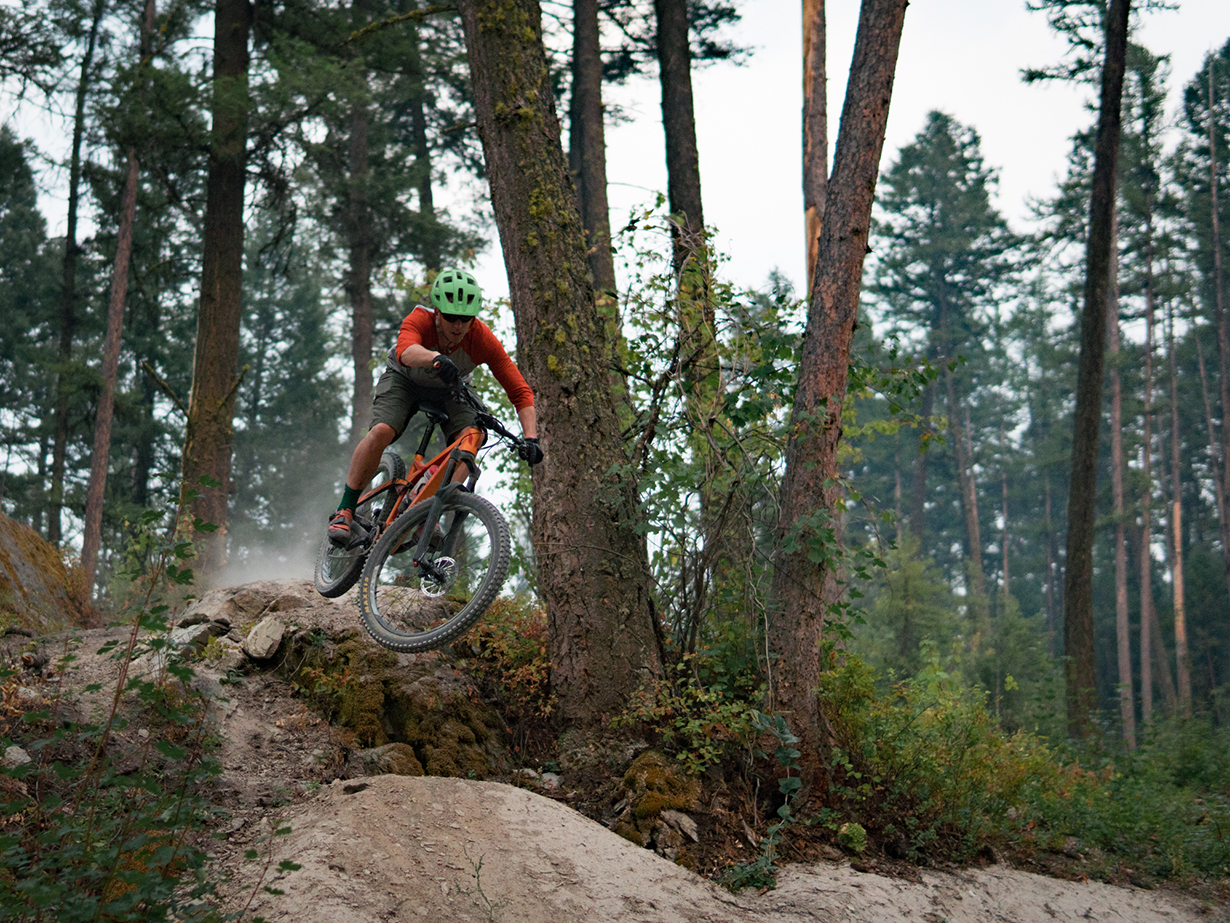
We took some tension readings on the spokes to check the tension balance on the build. Generally speaking, tension numbers should be within 20% of the average for a decently balanced wheel, and the Ibis wheels were well inside that. Average tensions on the rear wheel were around 120 kgf, but if those numbers don’t mean much to you, suffice it to say that in terms of lacing and tensioning the spokes, the 742’s are nicely built wheels.
Hubs
The Ibis branded hubs aren’t anything fancy, but they get the job done pretty well. They have 36 points of engagement, which isn’t knocking my socks off, but it’s enough that I don’t get instantly frustrated with it. And the hubs are built around Enduro bearings, which is what a lot of far more expensive hubs are using. To add to that, the Ibis hubs use regular j-bend spokes, they use a 6-bolt disc rotor mount, and they’ve available with either a Shimano or XD driver body. In other words, they’re not the fanciest looking things, but they work well, I don’t have to buy a different brake rotor for them, and if I break a spoke, I don’t have to spend a bunch of time trying to track down some weird straight-pull thing.
Mounting and Initial Setup
The 742 wheels came taped and ready for tubeless mounting, and they included some valves as well. At this point, we’ve mounted a bunch of different tires on them, and while I wouldn’t call them the easiest wheels to get tires on and off, they’re not terrible. Breaking the bead loose on the offset side of the rim first makes things a lot easier. And of course, a tight fit with the tire means it’s that much more difficult to burp a tire while riding, which is great. So in summary, no complaints in this department.
Width
I’m a strong advocate for matching your rim width to the tires that you’re most likely going to be riding. Sure, you can put a 2.3” tire on a 35 mm rim, or a 3” Plus tire on a 28 mm rim, but they’re not going to ride particularly well.
We mounted up an assortment of tires on these wheels, and the results were more or less what you’d expect. A 2.3” Maxxis DHR II worked, but the rim was a bit wide and the tire had an extremely square profile that wasn’t ideal. A 2.4” Maxxis Highroller II sat a little wider, and worked slightly better, but was still more squared off than I prefer. A 2.5” Maxxis DHF WT (which Maxxis says is designed around ~35 mm rims) worked well on the 742 rim.
At the other end of the spectrum, a 3” Terrene Chunk was a bit too rounded on the rim — it worked, but it was tough to fully engage the side knobs in corners. But a 2.8” Terrene McFly worked nicely and had a not-too-round profile that worked well.
So I’d say these wheels work best with 2.5” – 2.8” tires, with the new breed of 2.6” tires probably being the ideal candidates. And whenever someone decides to re-introduce 2.7” tires, those will be a great option too. A big 2.4” tire, or a small 3” tire will work ok, but those tires are somewhat less ideal.
Weight
So you’re looking to spend a bunch of money on a carbon wheelset. You want it to be light, because rotating weight matters. But you don’t want them to be too light, because then they’ll break, which would be a huge bummer. But you’re looking at wide rims, because they’re going to work well with the tires you want to run. But wide rims weigh more, so you’re having a minor crisis of the sort that, if you take a step back, you’ll shake your head and mutter something about first world problems. It’s ok. We’ve all been there.
Set up for tubeless (with rim tape and valve stems), the Ibis 742 Carbon Logo wheelset weighed in at 1,673 grams. I’d call that on the light side of average for a wide, Trail-oriented wheelset. Ibis claims the rim alone weighs 435 g, which is in the same neighborhood as some decidedly more expensive carbon rims (an Enve M60 HV, for example, weighs 422 g, although the M60 is a good bit narrower than the 742).
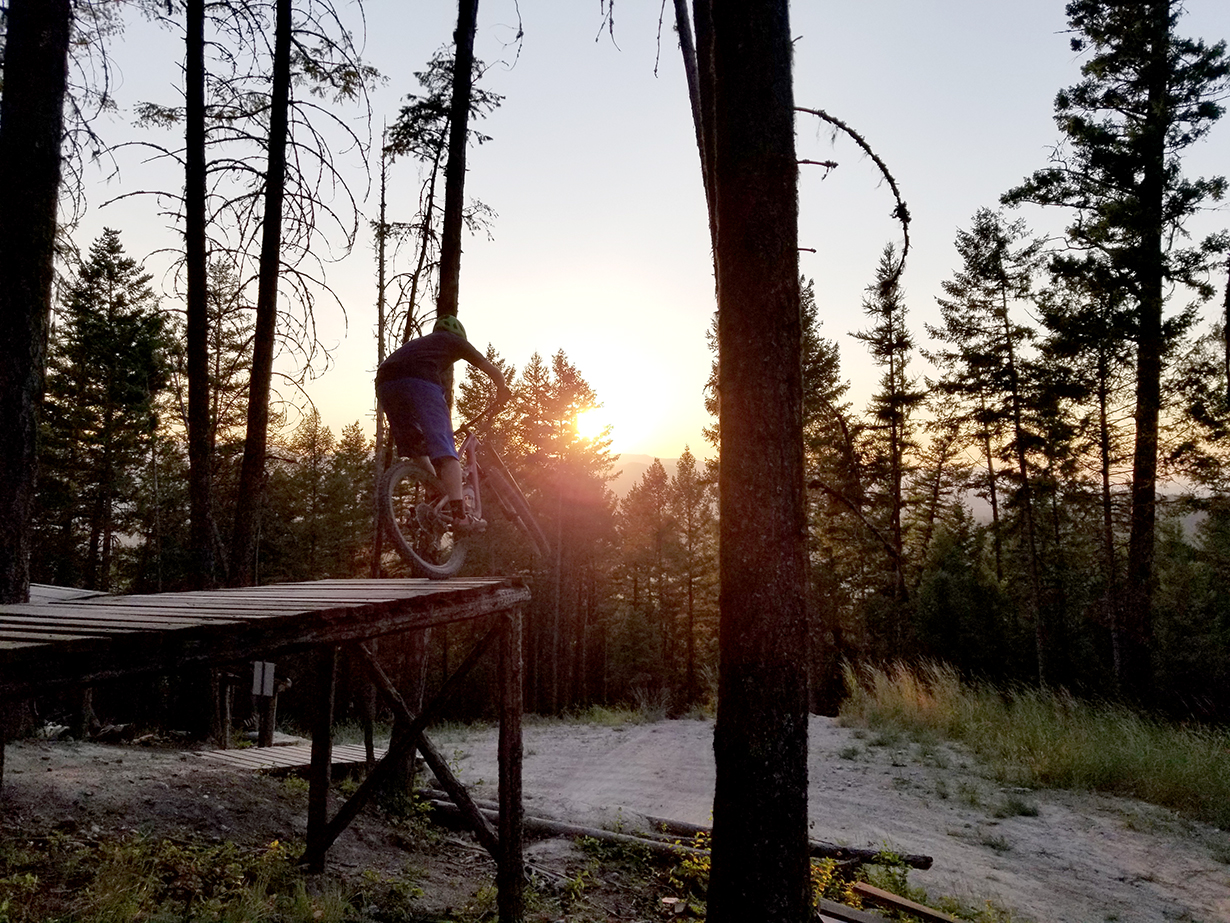
In other words, nothing about the Ibis wheelset’s weight sets off any red flags — it’s light enough that it’ll be a noticeable difference if you’re coming from an aluminum rim of similar width (a WTB Asym i35 rim weighs about 155 g more per rim). But it’s not so light that picking up the wheels immediately conjures visions of an explosion of carbon shards and missing teeth.
The Ride
The Ibis 742 Carbon Logo wheels do exactly what you’d expect (and want) a wheel like this to do. They feel light and snappy out of the gate. They’re stiff enough to feel responsive, without being so stiff that they feel harsh (which is a problem that, historically, a lot of carbon wheels have had).
Laterally, wide rims tend to be quite stiff and the Ibis 742’s are no exception. Throwing them sideways into choppy corners doesn’t produce any concerning flex, and a quick flick of the bars yielded a quick direction change rather than an errant wobble.

But it’s vertical compliance that’s more often the concern with carbon wheels — older carbon rims and some cheaper carbon options can feel pretty harsh. Now, to be sure, on a rim like the 742 that’s usually paired with a fairly high volume tire, that issue is significantly muted; any stiff harshness the rim might exhibit is largely absorbed by the tire. That said, even when running smaller tires at higher pressures, the 742’s didn’t feel excessively harsh. They’re perhaps not quite as damp as some carbon rims out there (e.g. the newer generations of Enve’s wheels), but they’re quite a bit more comfortable than some of the ultra-stiff options on the market (e.g. some of the burlier Reynolds rims).
The biggest thing (no pun intended) about these wheels is probably their width. Wide rims on trail bikes aren’t exactly a new idea, but it wasn’t until carbon rims became viable that the idea really took off. Why? Because wide tires are heavy. Take a wide aluminum rim (that’s not particularly light) and mount a 2.5” tire to it (which also isn’t particularly light), and all of a sudden you’re pedaling uphill on a tank. Now, granted it’s a tank that serves up a ton of traction and is a blast on the way down. But yeah, going uphill hurts.
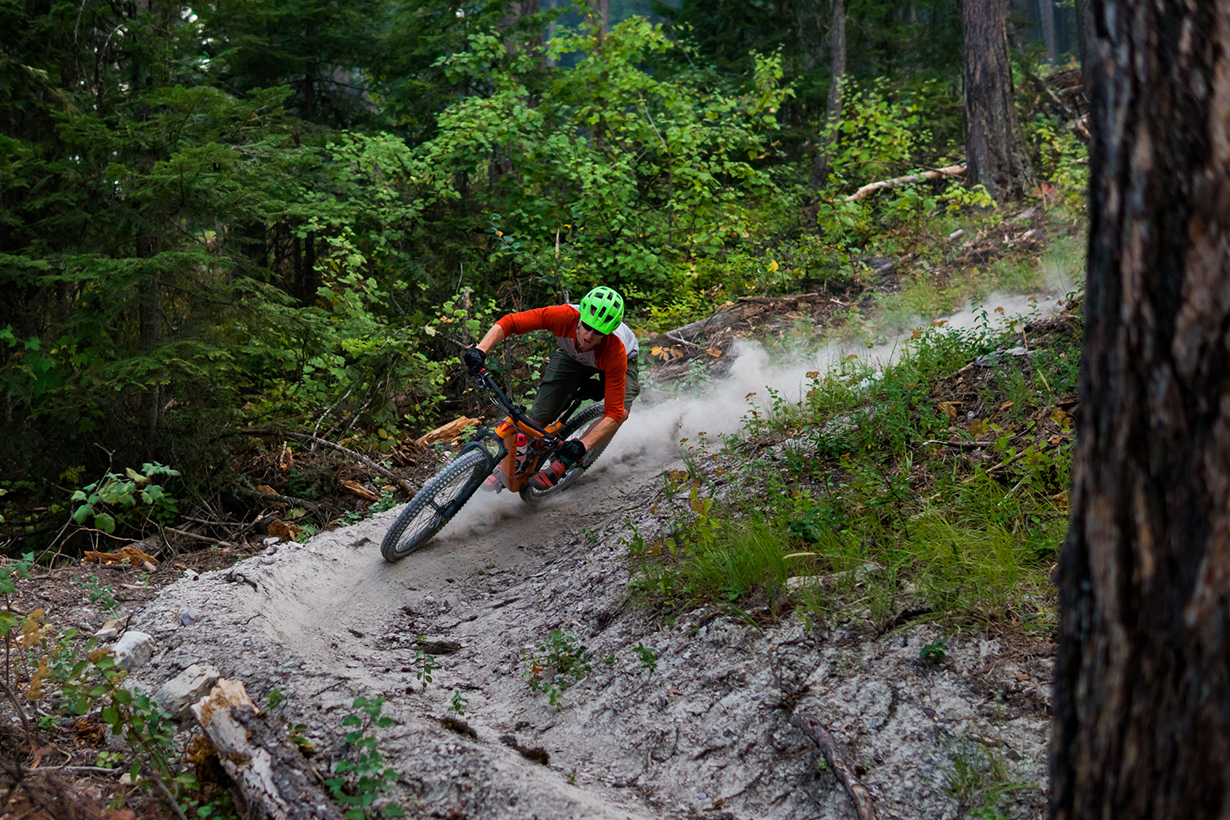
But carbon rims changed this dynamic. They remove a bunch of rotating weight from the rim, which means you can mount up a heavier tire without making the whole setup too porky. You get all of the upsides of more traction and descending fun, while minimizing the hefty downsides.
And that’s exactly what the Ibis 742’s are great at — they allow for a big tire and the traction that comes with it without making the bike feel too piggish. And they do all of that while retaining a ride quality that’s pretty dang good. They’re stiff in the ways you want a wheel to be stiff, without being excessively stiff in a way that makes for an uncomfortable ride.
Durability
If you’re going to drop over $1,000 on a wheelset, it better hold up really well. And for that reason, we spent quite a while on these wheels, mounting them with different tires on different bikes, all with the goal of seeing how they held up in the long term.
Neither I, nor Ron Brandt, the other reviewer who spent time on these wheels, is a huge person, and I wouldn’t classify either of us as a frequent destroyer of wheels. That said, we put these wheels through plenty of DH laps at the local resort, plenty of rock strikes and sideways landings, and a few flat tires
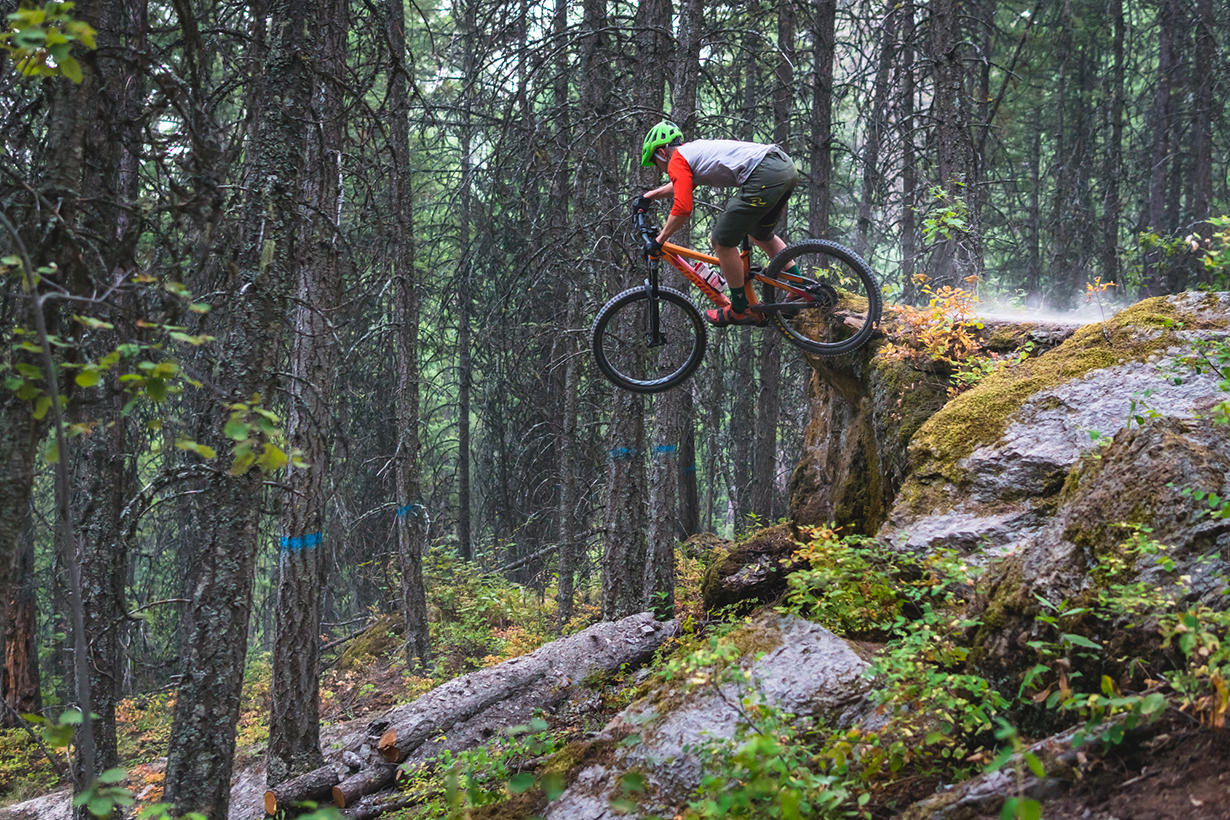
And through all of that, the rims are still in great shape. They’ve never needed to be trued, and they’re still running perfectly straight. There’s no cracks or anything of that nature, and the only blemishes are just from rocks hitting the stickers. The bearings are all still running entirely smoothly, and the freehub still engages cleanly. In other words, I don’t really have anything to report here — after 5 months of whatever abuse we could throw at them, the wheels are still essentially in “like new” condition.
Bottom Line
I’m having a hard time finding fault with the Ibis 742 Carbon Logo wheels — they’re respectably light, they’ve held up really well, and by carbon-wheel standards, the cost is pretty reasonable. They also come with a 7-year warranty (and lifetime crash replacement), which is pretty decent among carbon wheels. Yes, you can pay more and get a wheelset laced with fancier hubs, higher engagement, and prettier colors. And yes, there are wheels out there that are nominally stiffer laterally, and some that are slightly more compliant vertically. But in all of these categories, the 742’s are quite good, and I’d have a hard time justifying paying considerably more for improvements that are ultimately really minor.
What it really comes down to with these wheels is the width. If you’re looking for a Trail-oriented wheelset that might run anything from a 2.25” tire up to a 2.5” tire, I’d lean toward something with a narrower rim. But if you’re on the fat tire bandwagon — if you’re running 27.5+ or 29+, or in other words, if you’re running 2.5” – 2.8” tires — then these are the wheels for you.

I think the hubs are 2 yr warranty, rims are 7 yr.